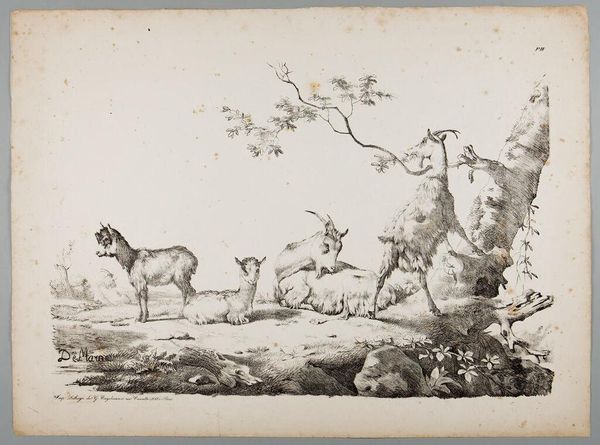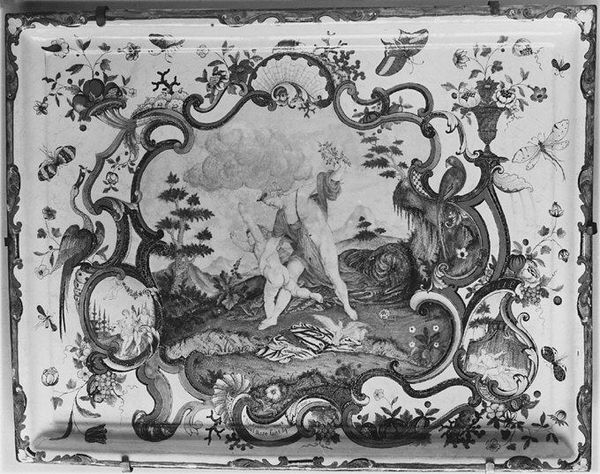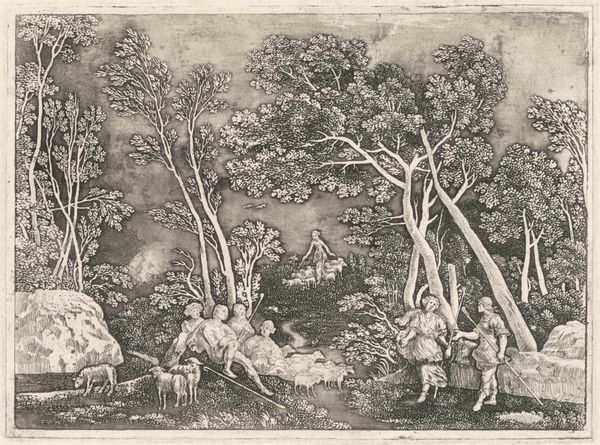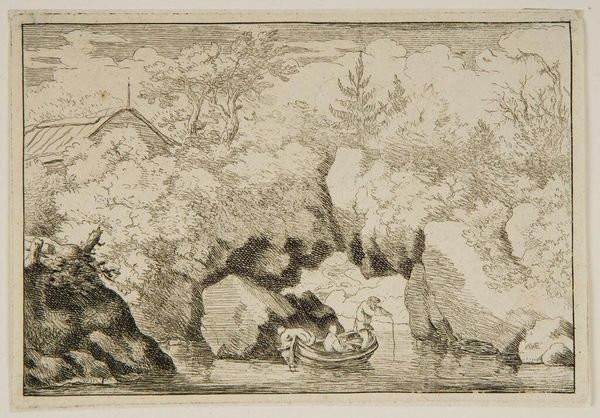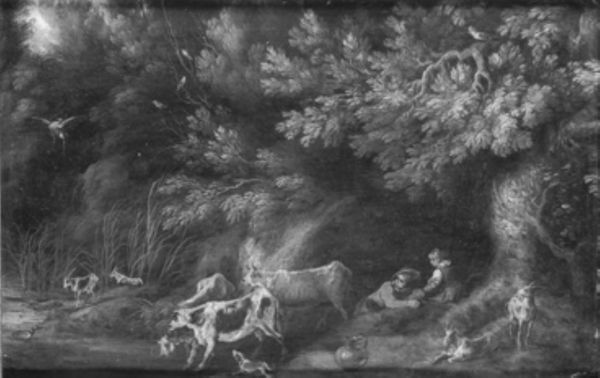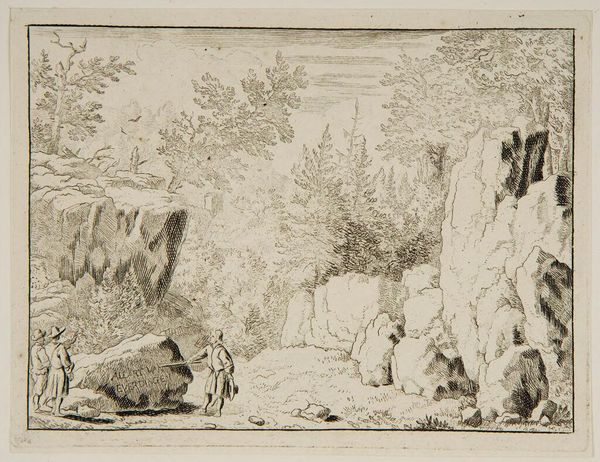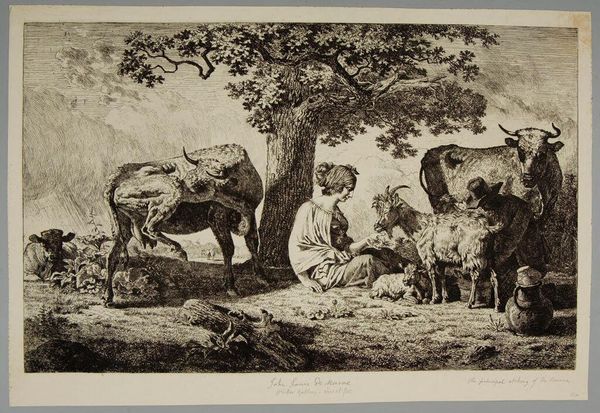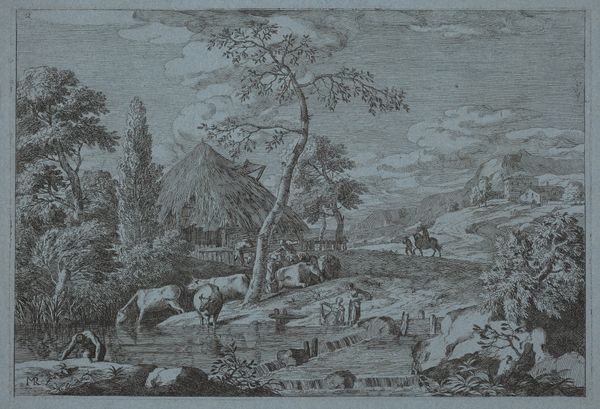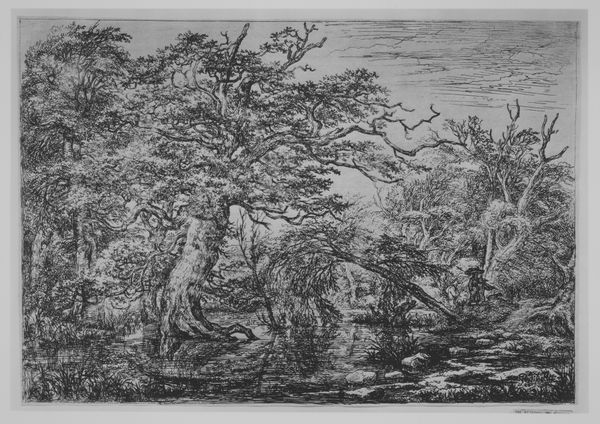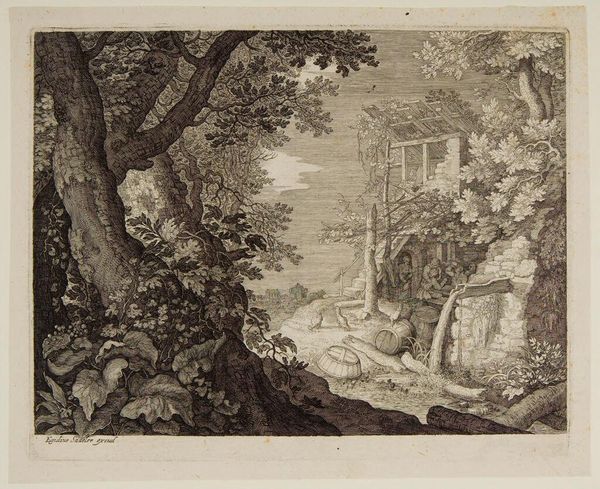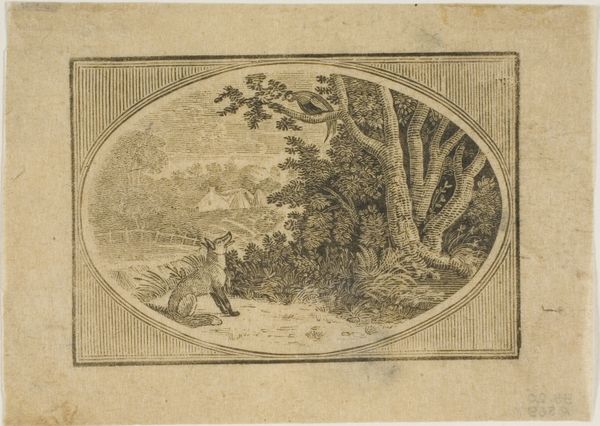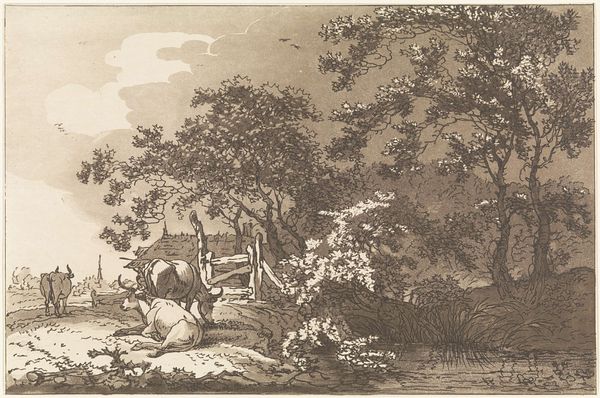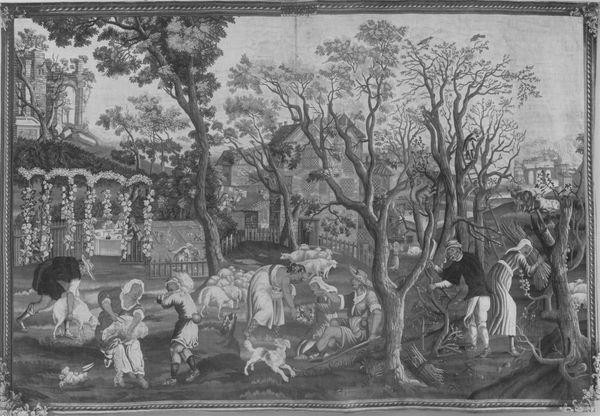
painting, ceramic, porcelain
#
painting
#
landscape
#
ceramic
#
porcelain
#
figuration
#
genre-painting
#
decorative-art
#
rococo
Dimensions: 6 3/4 × 9 3/4 in. (17.1 × 24.8 cm)
Copyright: Public Domain
Curator: Here we have a porcelain tray, likely part of a larger set, crafted between 1760 and 1770 by the Meissen Manufactory. Look closely; what's your first impression? Editor: It evokes a certain aristocratic whimsy, doesn’t it? Pastoral and posed, but the figures look... isolated. Almost like cutouts pasted onto the landscape. Curator: The landscape depiction aligns perfectly with Rococo sensibilities, but let’s consider the actual labor involved. Meissen was renowned for its kaolin clay, sourced locally, that allowed for this extremely fine porcelain. Editor: Fine porcelain that was intended to represent the bucolic simplicity and pleasures available to an elite class. It ignores the realities of peasant life to create a highly stylized fantasy. Look at the female figure. Does this stagecraft subtly enforce expectations and boundaries of gendered identity in a rural performance for consumption? Curator: But aren’t we overlooking the technical virtuosity here? The piece reflects highly skilled labour; consider the specialized training required to achieve such delicate painting on ceramic. There’s a hierarchical organization of production, no doubt, with clear distinctions in skill and pay. Editor: Absolutely. And this stratification speaks to a larger system, doesn't it? Meissen enjoyed the patronage of royalty— Augustus the Strong, for example—whose wealth depended on complex colonial supply chains and extraction. A harmless image hides layers of global economic structures and exploitation. The romanticized vision served to validate the established societal order of 18th century Saxony. Curator: So, for you, the appeal of this decorative artwork ultimately depends on confronting the socioeconomic and historical context within which the Meissen Manufactory flourished? Editor: Precisely. Ignoring that would be, in my view, a significant oversight, and would reduce it to purely a technical specimen divorced from its time. Curator: Well, thinking about all of the resources, labor, and artistry… it leaves me pondering our complex relationship with historical objects, how they mediate values, and still communicate today. Editor: For me, too. And I think we need to also realize it isn’t just pretty, but a historical relic enmeshed in inequalities that continue in new forms.
Comments
No comments
Be the first to comment and join the conversation on the ultimate creative platform.
